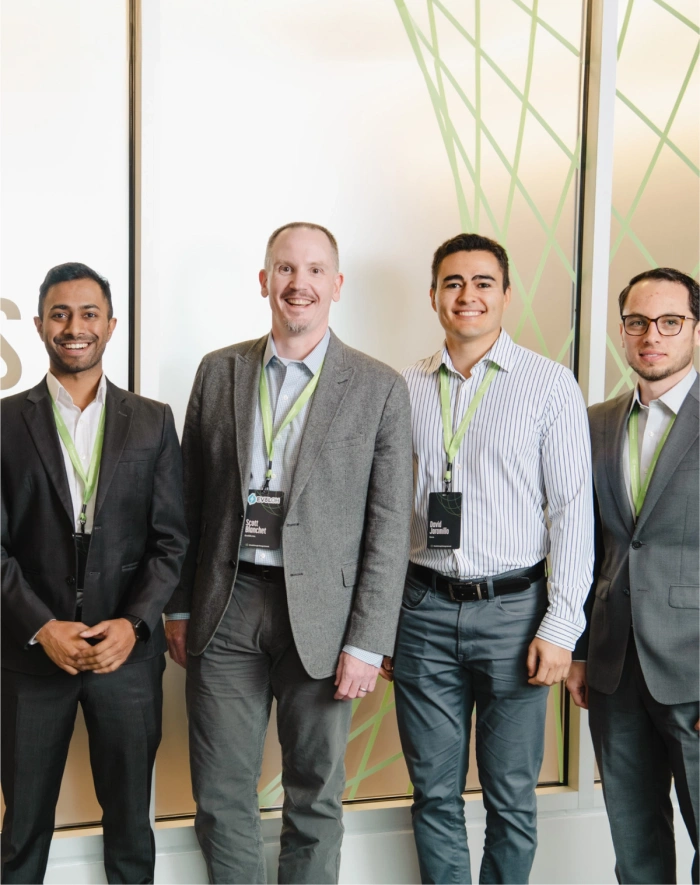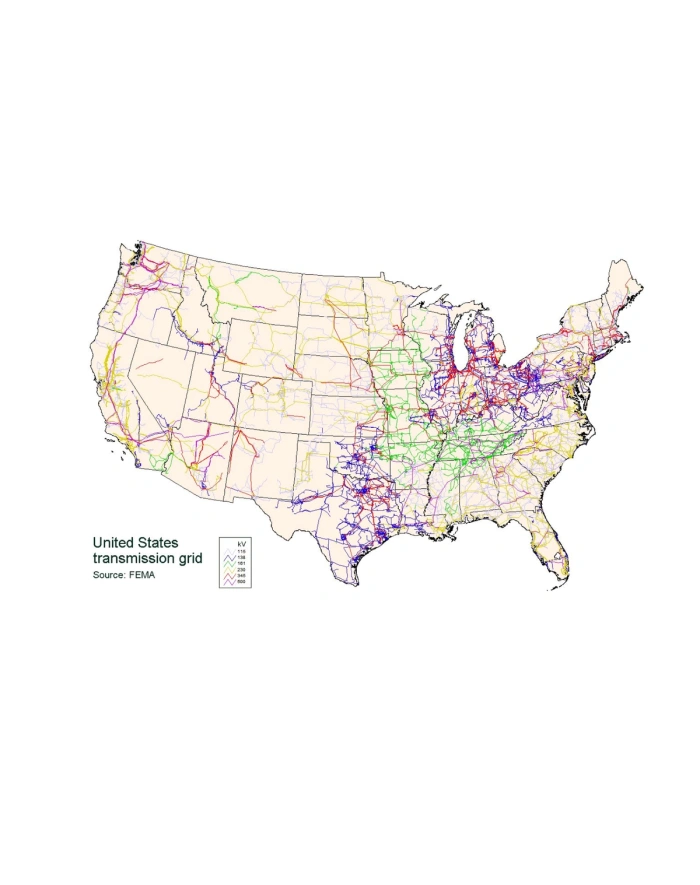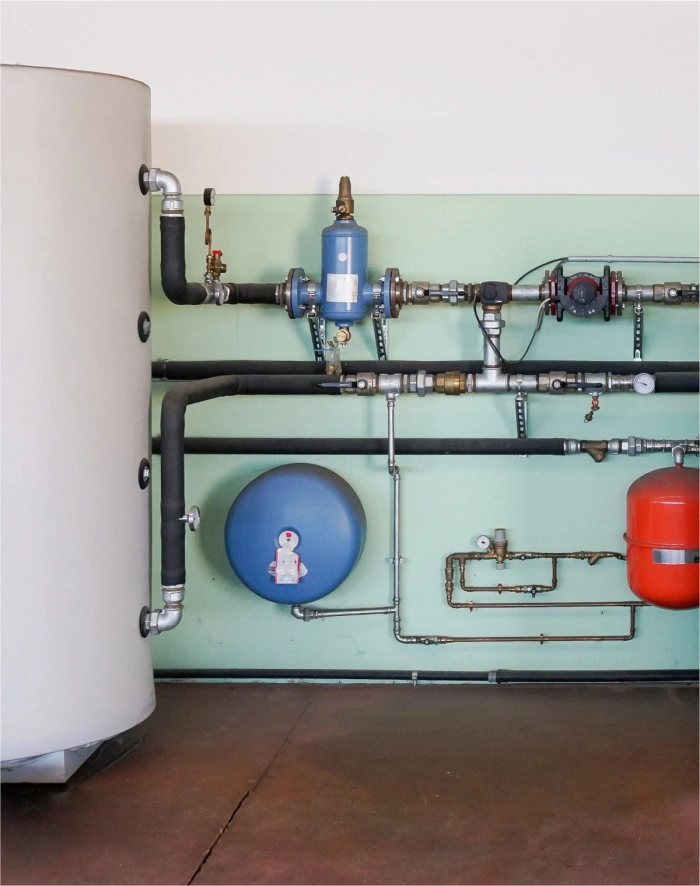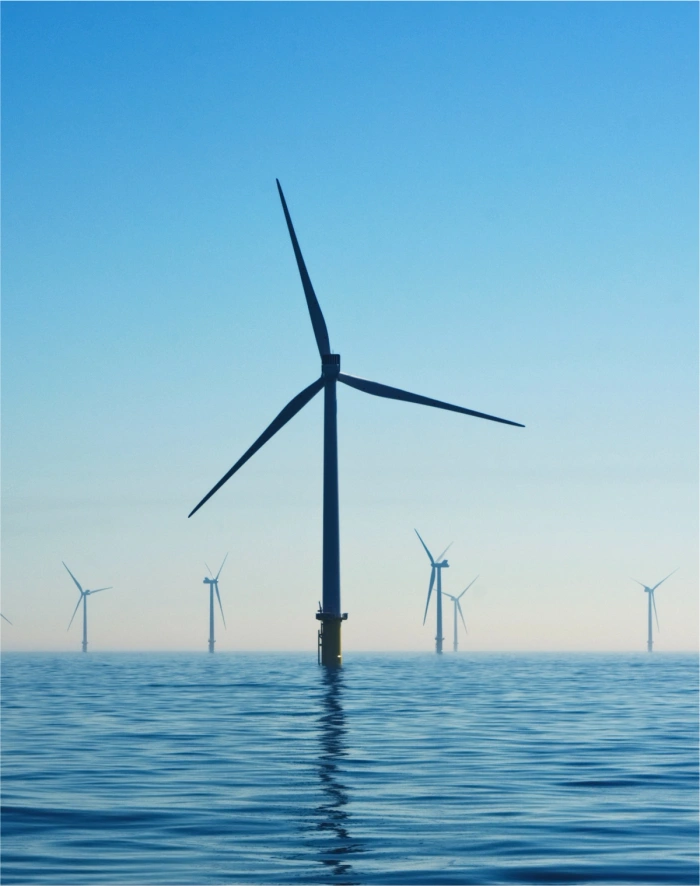
BE Fellows at the Breakthrough Energy Summit
“Even with all this support, some of these highly risky technologies will hit a dead end — and that’s okay. We also consider human capital development as a goal in itself: our overall program curriculum is designed toward cultivating talent and empowering scientists to keep innovating in the climate space.”
90
Through three cohorts, we’ve already supported 90 Fellows, across 41 projects and 13 countries, in areas including cement, hydrogen, long-duration energy storage, steel, electrofuels, and carbon capture. We are continuing to scale and grow the program.

Aerial view of a solar power plant in the countryside
It’s also about keeping up with demand. Because as we electrify things, more people will need even more electricity.
Estimates suggest that electricity demand could triple by 2050 in order to reach net zero.
2050
Demand will also continue to increase as emerging markets become wealthier. A society’s wealth directly correlates to how much energy it has access to . And all nations should be as prosperous as they can be.
We’ll never build a coalition to fight climate change if the implicit message is that people have to stay poor.

A motion-blurred photo of office buildings in a business district
Most people — even those who run big utility companies — haven’t fully grasped just how much energy we actually need. It’s a huge amount. In order to meet the 2050 net-zero goals, the International Energy Agency (IEA) estimates that we will need to start deploying renewable energy at least three times faster.
Right now renewables are scaling rapidly to meet that challenge. And several companies are working to accelerate the pace and address the cost and logistical hurdles that renewable energy generation faces.
For example, Aikido , a company led by three Breakthrough Energy Fellows , is developing a self-upending, semi-submersible platform designed specifically for floating, offshore wind turbines. It can fold up so the turbine and the platform can fit through relatively small spaces and unfold like a fan when it reaches its target spot in the ocean.
3X
The bigger issue with renewables, though, is intermittency. People need electricity on demand even when the wind doesn’t blow or the sun doesn’t shine. But what if the grid wasn’t dependent on the weather?
The most efficient way to handle the intermittency challenge is through a combination of storage and transmission. These two solutions would allow us to move electricity through time and space. Let’s start with storage.

A battery built by Form Energy
A holy grail for LDES would be hydrogen. As Bill wrote in this report’s foreword, hydrogen could be a key way to store renewable energy that powers cities where the sun isn’t shining or the wind isn’t blowing. That’s because hydrogen is the key ingredient in fuel cell batteries, and these batteries, unlike wind or sunlight, can be boxed up and shipped and stored for years before they’re converted back into energy.
The challenge is cost. It’s expensive to manufacture hydrogen without emitting carbon dioxide (CO₂). Fortunately there are other ways of producing LDES technologies — mechanical, thermal, chemical, and electrochemical methods that can operate for at least 10 hours.
100hrs
One promising company is Malta , which takes electricity from the grid and converts it with a heat pump to thermal energy by creating a temperature difference. The heat produced by this process is stored in molten salt, while the cold is stored in a chilled liquid antifreeze coolant. When the grid needs power, the temperature difference is converted back into electrical energy by a heat engine.
Form Energy has come up with another method. Founded by the former head of Tesla’s stationary energy storage program, it stores electricity for up to 100 hours in what’s known as an iron-air battery that converts iron into rust and then reverses the process on demand.

A transmission grid of the United States
In fact, 80% of the IRA’s emissions reductions will go unrealized if the United States doesn’t increase its grid’s transmission capacity by over 60% by 2030 — and at least double or triple it by 2050.
Most of the power lines you see today in the United States were built between the 1950s and the 1970s. In terms of electricity infrastructure, it’s downright ancient, and these power lines were only meant to last 50 years in the first place.
In fact, the United States doesn’t really have one grid, but a messy patchwork of many grids, which makes it essentially impossible to send electricity beyond the region where it’s made. It’s also fairly dumb. Systems don’t talk to each other well and are slow to adapt to change.
The U.S. power grid wasn’t designed with a net-zero world in mind. It relies on railroads and pipelines to move fuel over long distances to centralized power plants, where that fuel is turned into electricity and transmitted over short distances to the cities that need it. This system doesn’t work for wind and solar, which are intermittent and often far from where people live.
80%
That’s why the United States needs to upgrade the grid, build more high-voltage transmission lines that can carry electricity long distances, and use those transmission lines to better connect regions and communities to one another.
In other words, an interstate highway system for electricity needs to be built that can bring power to every corner of the country (on land and offshore), with the digital systems to make it smart, adaptable, and efficient.

A geothermal heat pump
Of course, it doesn’t matter how efficient a heat pump is if no one buys it or if it doesn’t work right. Right now, the upfront cost of heat pumps deters many customers. And while heats pumps typically provide 50% energy savings, they use 30% more energy than they should if they’re installed incorrectly.
A company called Conduit Tech is trying to fix this bottleneck by streamlining the ordering and installation process. Conduit enables HVAC professionals to more easily identify homeowners that are good candidates for electrification and support them through the product lifecycle — design, installation, and maintenance.
30%
The recent Inflation Reduction Act is helping, too, by heavily subsidizing heat pumps, with tax credits up to 30% of the purchase cost.

A building construction site with steel girders
It doesn’t matter if we make greener steel and cement if we ignore the way it gets into the ground.
We need to incentivize that aggressively, through public policy, regulation, public procurement, and education. Officials at every level of government should expand the regulatory incentives and support for the use of green manufacturing alternatives.
Public procurement — the process by which public authorities purchase goods and services from companies — can play a huge role in the early movement of markets.
Getting national and state governments to be among the first major customers for clean alternatives to cement and steel can radically disrupt these markets over time.

An electric vehicle
The SOLUTION
Fortunately, there’s one aspect of zero-carbon transportation where both the engineering and the economics are just about solved: electric cars and light vehicles.
Today, road transportation accounts for roughly 75% of all transportation-related emissions, and passenger cars are responsible for half of that. Electrifying the Earth’s fleet of cars would be an enormous achievement, and many of the cost and engineering barriers have already been overcome. The remaining challenges involve building out charging infrastructure, improving battery safety and the supply chain to make them, as well as the time it will take to turn over the current fleet of vehicles.
It’s the other postcards — ships, planes, and heavy-duty trucks that need to travel long distances — that are still a little fuzzy.
These modes of transportation are simply much harder to electrify than passenger vehicles. They’re heavier; they require more energy and must cover more distance; and they’re far more expensive.
75%
We do know what the general picture should look like, and it’s not whale-powered underwater boats or individual propeller planes. In fact, the outline looks a lot like it does today: fuel. Just without the carbon. Unfortunately, that’s a lot harder than it sounds. Bio- and electrofuels are potential substitutes, but today, the Green Premium of these products is much too high to widely commercialize them.
The science and economics of creating carbonless liquid fuel just aren’t mature yet. And it’s going to take huge investment, historic innovation, and major policy changes to get there.

Offshore wind turbines
Human beings are going to need liquid fuels for a long time — longer, certainly, than anyone reading this will be alive. And government support will be critical for lowering costs.
The European Union, for example, is well-positioned to be an e-fuel leader. The North Sea is packed with windmills producing clean electricity to power the hydrogen-splitting electrolyzers, and Europe’s carbon pricing scheme is an extra force pushing down the Green Premium for sustainable fuels. Now, fuel suppliers must ensure that two percent of fuel made available at EU airports is SAF in 2025. This rises to 20% in 2030 and 70% by 2050. 35% of fuels must also be synthetic fuels, which are made using captured CO₂ emissions, by 2050.
Meanwhile, the United States first tried to tackle clean fuels for passenger vehicles through the creation of the “Renewable Fuel Standard” in the early 2000s. Unfortunately, this policy has not yielded significant emissions reductions in the transportation sector and has failed to incentivize the production of innovative low-carbon liquid fuels.
2025
To truly stimulate innovation in the fuels space — especially for use in long-distance planes and ships — we need better policy that doesn’t pick winners and losers and instead rewards fuel makers for producing increasingly cleaner fuels. California, Washington, and Oregon all have a state clean fuel standard program that can serve as models.

An aerial view of crop fields
For the last century, farmers have used synthetic fertilizer to dramatically increase yields for wheat, rice, corn, and soybeans, helping feed people and animals the world over. In fact, wheat and rice alone account for about 40% of global caloric consumption.
Farmers use synthetic fertilizer to provide their crops with nitrogen, an indispensable element for life on Earth. The more nitrogen crops have, the more they grow, the greater a farmer’s yield. But this process is having serious effects on our environment — from air and water quality to human health and ozone-depletion.
Synthetic fertilizer production accounts for approximately two percent of the world’s energy use and contributes to one percent of its GHG emissions.
N₂O
Nitrous oxide is the toxic byproduct of nitrogen fertilizers. You may know nitrous oxide as laughing gas, but in the context of climate change, there’s nothing funny about it. Nitrous oxide is nearly 300 times more potent than CO2 and is now the world’s dominant ozone depleting substance.
Then there are the geopolitical concerns , as the majority of nitrogen production comes from the Middle East, China, and Russia, where we’ve seen conflict significantly disrupt the nitrogen supply chain. Before the Russian invasion, Ukraine was a crucial agricultural trade partner to the European Union, supplying significant shares of animal, vegetable oils, and cereal crops. Additionally, the European Union relies significantly on Russian imports of ammonia and urea, both processed forms of natural gas, for fertilizer production. This disruption has caused food and natural gas prices to skyrocket throughout Europe and other parts of the world.

A close-up of dark gray stone
The SOLUTION
Heirloom , a San Francisco-based company, is trying to get around some of these obstacles. Heirloom uses a process called carbon mineralization. They grind up limestone, put it on larger baking-esque sheets, and let it passively pull CO2 out of the air. Once it’s fully saturated with CO2, they put it inside an electric kiln, heat it up to release the CO2 that was absorbed, and put the carbon underground (or sequester it in cement, which they sometimes do via another BEV portfolio company, CarbonCure). Because of the limestone’s passive properties, this method uses significantly less heat and power than traditional direct air capture technologies.
Once you capture carbon, however, you need a place to store it. Companies like 44.01 work with DAC companies to do exactly that. 44.01’s process takes captured CO₂, combines it with water, and injects it deep underground into a rock called peridotite.
CO₂
Because this rock in particular is very reactive with CO₂, it accelerates the process of mineralization, turning CO₂ into a solid in a matter of years, compared to traditional CO₂ storage, which can take thousands of years to mineralize.
These innovations hold a lot of promise and potential, and direct air capture may well be the way of the future. But for now, most DAC options are just too expensive, energy intensive, technologically complex, and regulatorily fraught to scale globally.
